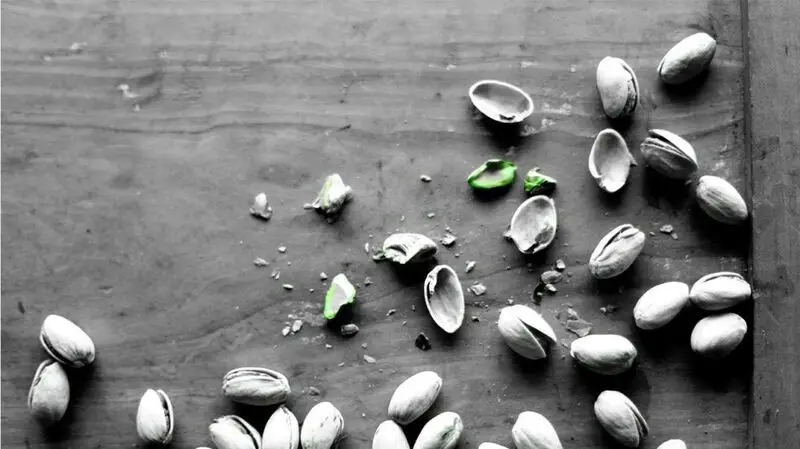
- Adding pistachios to one’s diet improves eyesight, according to a new study.
- The study found that eating two ounces of pistachios daily for 12 days significantly improved the health of macular pigment optical density.
- Macular degeneration is the leading cause of vision loss for people over the age of 60.
- The key to pistachios’ vision benefit is the plant pigment lutein, which is unusually bioavailable in nuts.
Eating a handful of pistachio nuts each day can significantly improve eye health, according to a new study from the Friedman School of Nutrition Science and Policy at Tufts University.
Adding two ounces of unsalted, shelled, dry-roasted pistachio nuts each day for 12 weeks to participants’ usual diet improved their macular pigment optical density (MPOD).
The study was supported by the American Pistachio Growers and the National Institutes of Health’s National Center for Advancing Translational Sciences.
The macula is a small area in the center of the retina at the back of the eye. It is critically important for good vision in that it is responsible for central vision, color vision, and capturing fine visual details. These include facial features and written text.
It is not uncommon for macular degeneration to occur as one ages. It is
Macular degeneration can also occur in younger people. The primary risk factors are:
- smoking
- a family history of macular degeneration
- being overweight
- hypertension.
Pistachios are unusually rich in bioavailable lutein, a plant pigment that protects the macula from damage from blue light. The study found that participants’ lutein levels increased after only six weeks and doubled by the end of the study.
While treatment for advanced macular degeneration may be possible, it is best to catch the condition early on, when it may be treated nutritionally or with supplements.
The study is published in The Journal of Nutrition.
Benjamin B. Bert, MD, is a board certified ophthalmologist at MemorialCare Orange Coast Medical Center in Fountain Valley, CA. He was not involved in the study.
“When we think about the energy of light, things that are in the blue wavelength tend to be shorter wavelengths, so they carry with them more energy,” said Bert.
Even after the most energetic ultraviolet wavelengths are absorbed by the cornea and lens, “you still have some of the blue wavelength of light that’s going to make it into the back of the eye.”
Lutein’s pigment, Bert explained, “helps to both filter and absorb some of the blue light wavelengths.”
As a result, he said lutein “helps to reduce some of the glare and give better clarity and contrast to our vision, and helps to absorb some of that higher-energy light.”
The macula “needs to have enough of a reserve, so the light isn’t continuing to penetrate,” and cause damage, said Bert.
What distinguishes the pistachio as a high-quality delivery mechanism for lutein is the degree to which it makes the pigment bioavailable, thanks to the nuts’ heart-healthy, mono- and polyunsaturated fats.
“Lutein is also available with heart-Healthy fats in avocados, and in dark leafy vegetables,” said Michelle Routhenstein, MS, RD, CDCES, Preventive Cardiology Dietitian at EntirelyNourished.com, who was also not involved in the study.
She recommended, however, that “to obtain these benefits from broccoli, and spinach, I recommend pairing these greens with nuts, seeds, oils, or fatty fish like salmon.”
Lutein is also capable of crossing the brain-blood barrier.
Routhenstein pointed out that lutein is therefore “a fat-soluble antioxidant that research shows may protect eye, skin, brain, and heart health due to its anti-inflammatory nature and ability to reduce oxidative stress.”
Another plant pigment that can reduce macular degeneration is zeaxanthin. “It’s a fat-soluble antioxidant found in orange peppers, kale, and green peas. To boost its absorption,” Routhenstein suggested, “it’s helpful to consume it with a heart-Healthy fat, or you can opt for a fat source rich in zeaxanthin, like pistachios.”
Two ounces of pistachios is about 50–60 nuts (about 320 calories).
Bert emphasized that the best strategy for avoiding macular degeneration is to see one’s ophthalmologist once a year for a checkup before symptoms appear.
Beyond that, he said, “any changes in vision, or in the clarity of vision, should prompt an appointment to be made in and have an exam done.”
He noted two specific changes that might signify a problem: unusual changes in the shapes of objects, as well as lines that appear to “wiggle” or that even seem to have gaps within them.
Advanced macular degeneration is categorized as either “wet” or “dry.”
In wet macular degeneration, said Bert, “there is the gradual accumulation of metabolism byproducts of the retina” that cause a “weakening of a barrier that prevents blood vessels from growing from into the retina. The blood vessels themselves are leaky, so they actually have blood products that leak out into the retina, causing it to swell.”
For treatment, injections deliver a monoclonal antibody to stop the growth of the blood vessels. The hope is that this allows the retina to stabilize, slows the progression of degeneration, and gives a patient’s vision a chance to improve.
With dry macular degeneration, deposits called drusen form in the macula that can cause atrophy. These may cause parts of the retina and macula to begin dying off. There are new medications available for treating dry macular degeneration, though they are still under evaluation “in a real-world setting,” said Bert.





